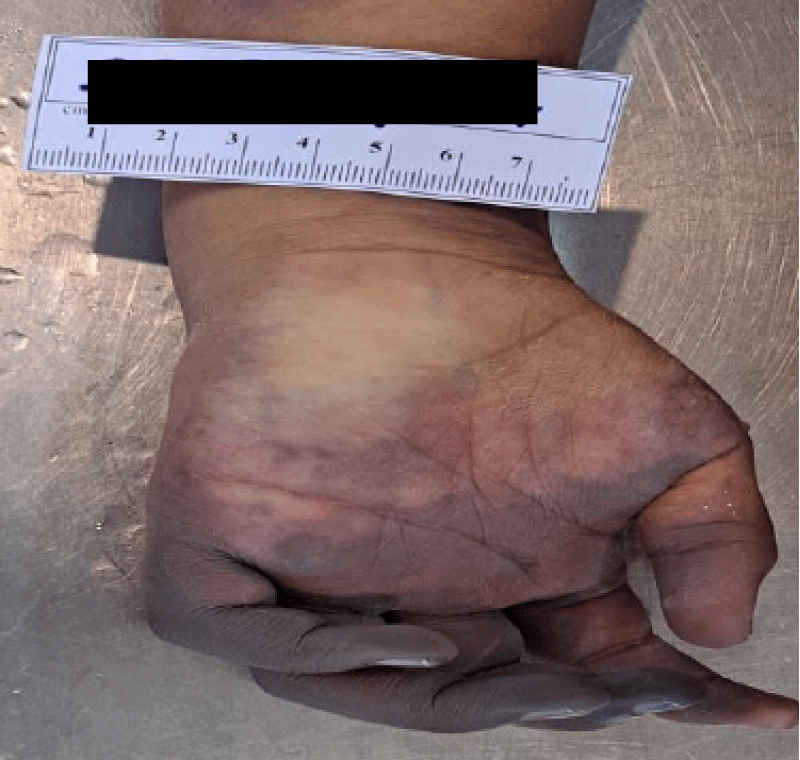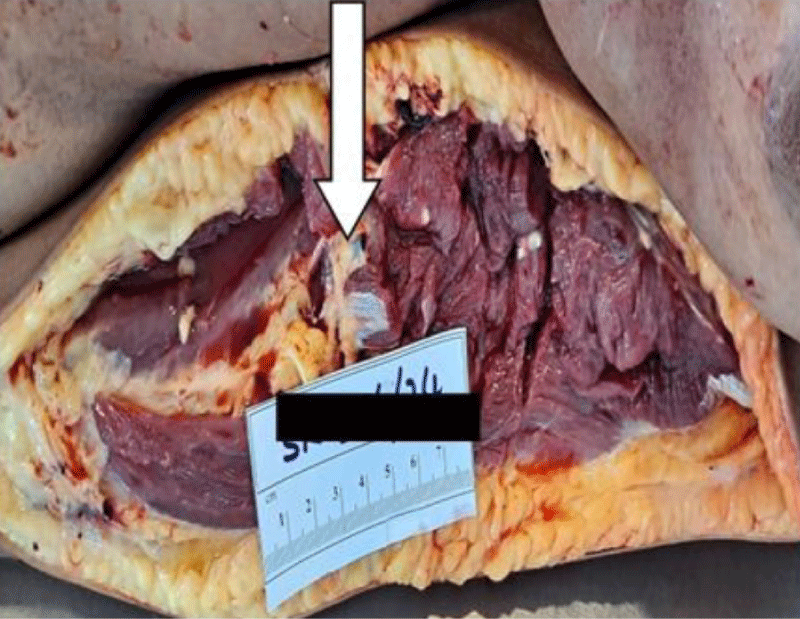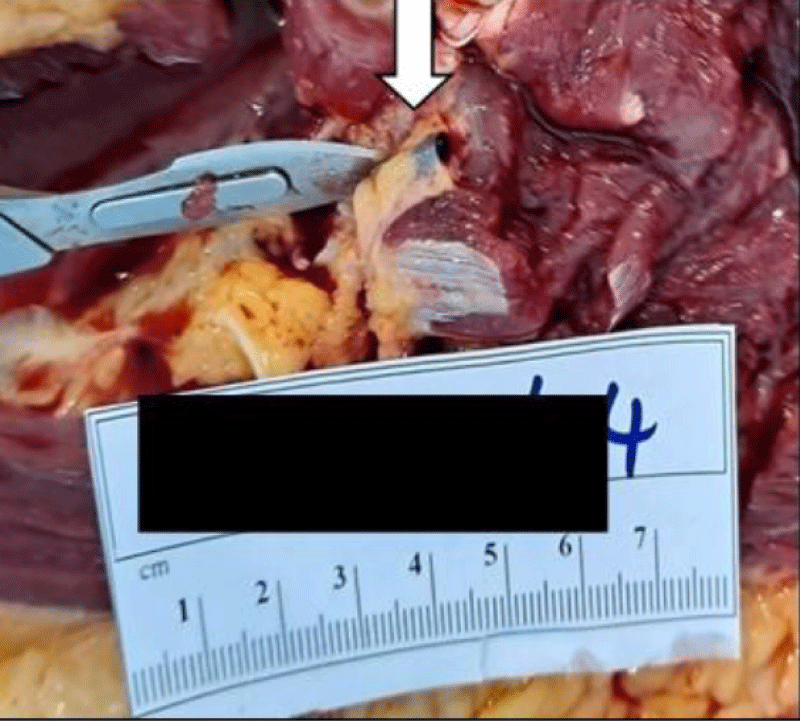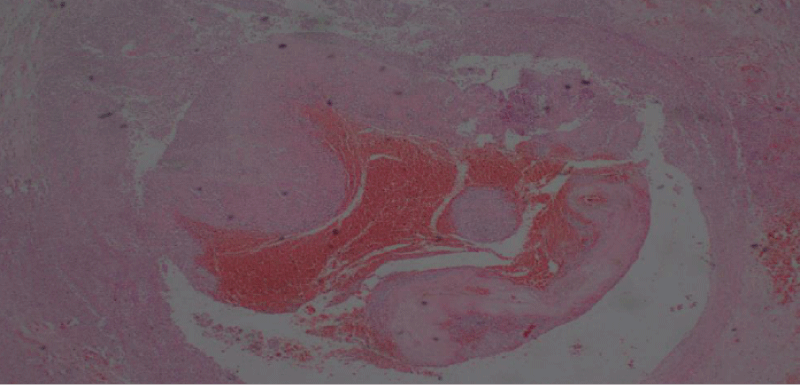More Information
Submitted: April 29, 2025 | Approved: May 08, 2025 | Published: May 09, 2025
How to cite this article: Perera V. Menstrual Taboos and Child Rights: Death of a Girl during Menarche. J Forensic Sci Res. 2025; 9(1): 050-053. Available from:
https://dx.doi.org/10.29328/journal.jfsr.1001080
DOI: 10.29328/journal.jfsr.1001080
Copyright License: © 2025 Perera V. This is an open access article distributed under the Creative Commons Attribution License, which permits unrestricted use, distribution, and reproduction in any medium, provided the original work is properly cited.
Keywords: Gender inequity; Menstrual taboos; Menarche
Menstrual Taboos and Child Rights: Death of a Girl during Menarche
Vishadha Perera*
Karapitiya, Sri Lanka
*Address for Correspondence: Vishadha Perera, Karapitiya, Sri Lanka, Email: [email protected]
Introduction: Menarche, the onset of a girl's first menstrual cycle, often introduces menstrual taboos in certain eastern cultures. These taboos may manifest as social isolation, dietary restrictions, and exclusion from religious spaces, which can adversely affect health and promote gender inequality.
Case history: A 10-year-old girl developed gastroenteritis while in cultural confinement after reaching menarche. Her parents strictly adhered to traditional customs that limited her interactions with the outside world and deprived her of healthy foods. They believed that her fatigue was a result of hormonal changes associated with menarche. Although her condition worsened over four days, they did not seek medical treatment. The child succumbed upon admission. The autopsy revealed extensive cyanosis in the left hand due to multiple thrombotic occlusions of the brachial vein. Microscopic examination confirmed the presence of brachial venous thrombi. The cause of death was determined to be Multiple Organ Dysfunction Syndrome (MODS) as a consequence of hypovolemic shock.
Discussion: Key medico-legal issues in this case include parental negligence and failure to provide medical care under Section 308A of the Penal Code, potentially leading to criminal liability for negligence-related death under Section 298. Violations of the child's rights, protected by the Children and Young Persons Ordinance (CYPO) and the Protection of Children's Rights Act, form the legal framework for child protection in Sri Lanka. The ISD has interviewed family members and collected witness statements from neighbors and teachers, referring the case to the police for further investigation and notifying the National Child Protection Authority for an additional inquiry. Additionally, Sri Lanka is a signatory to the United Nations Convention on the Rights of the Child (UNCRC), which guarantees children's fundamental rights.
Menarche, the onset of a girl’s first menstrual cycle, should be a natural and empowering experience. However, in several Eastern cultures, it is often accompanied by menstrual taboos that impose social isolation, dietary restrictions, and exclusion from religious practice, rooted in perceptions of impurity. These practices can adversely affect physical and mental health and contribute to gender inequality. In some communities, menarche is also viewed as an indicator of readiness for marriage, increasing the risk of teenage pregnancy and violating fundamental rights [1,2].
A 10-year-old girl experienced vomiting, watery diarrhea, and a low-grade fever, indicative of gastroenteritis, while in cultural confinement following her first menstruation. Other family members also displayed symptoms suggestive of gastroenteritis. Her parents, adhering strictly to traditional customs, limited her interaction with the outside world and failed to provide adequate nutrition. Believing her fatigue to be a result of hormonal changes associated related to menarche, her mother administered over-the-counter medications without consulting a physician. Despite her worsening condition worsened over the next four days, no medical help was sought. The child was eventually hospitalized in a severely dehydrated state and succumbed shortly after admission.
Clinical records upon admission noted sunken eyes, dry skin and mucous membranes, decreased urine output, and hypotension. Marked cyanosis was observed in the left hand (Figure 1) caused by multiple thrombotic occlusions in the brachial vessels of the left upper limb (Figures 2,3 [indicated by white arrows]), latter attributed to multiple thrombotic occlusions in the brachial vessels, confirmed during the autopsy.
Figure 1: Left hand cyanosis.
Figure 2: On gross examination, the brachial vessles of the left upper limb appeared distended contained multiple dark red to bluish intraluminal thrombi. (Indicated by white arrows) These thrombi were firm in consistency, occluding the vessel lumen.
Figure 3: On gross examination, the brachial vessles of the left upper limb appeared distended contained multiple dark red to bluish intraluminal thrombi. (Indicated by white arrows) These thrombi were firm in consistency, occluding the vessel lumen.
The brain appeared pale and edematous, consistent with hypoxic-ischemic encephalopathy. The kidneys were swollen and pale, with an indistinct cortico-medullary demarcation. The liver exhibited fatty changes, the heart was flabby with dilated chambers, and the lungs were heavy and hemorrhagic. Ischemic changes and necrosis were evident in both small and large intestines. The spleen was soft and friable.
Histological analysis showed thrombi in the brachial vessels (Figures 3,4), ischemic-type acute tubular necrosis in the kidneys, adrenal parenchymal hemorrhages, and pulmonary alveolar hemorrhages with edema and interstitial neutrophilic infiltration.
Figure 4: Histological section of the brachial vessel showing intraluminal thrombus (Hematoxylin and Eosin stain, original magnification × 10). The thrombus appears eosinophilic with entrapped red blood cells and fibrin mesh, indicating acute thrombosis.
The toxicology and septic screenings, including cultures and viral studies, were negative. The cause of death was determined to be Multiple Organ Dysfunction Syndrome (MODS) due to hypovolemic shock.
Dehydration is a recognized risk factor for thrombosis, though its direct association is not well established. Literature reveals rare instances of Deep Vein Thrombosis (DVT) following severe dehydration due to gastroenteritis [3,4].In this case, immobility during confinement and inadequate hydration likely contributed to thrombus formation in the upper limb veins. Mechanisms include increased blood viscosity, hemoconcentration, endothelial injury, and stasis.
1. Hemoconcentration and circulatory consequences
In children, dehydration leads to hemoconcentration, a condition where the loss of plasma volume results in an increased concentration of blood cells and solutes. This process significantly raises blood viscosity, making circulation sluggish and impairing oxygen delivery to tissues. The reduced plasma volume also diminishes cardiac output, increasing the risk of hypoperfusion and ischemic complications.
Additionally, hemoconcentration contributes to microvascular stasis, where slowed blood flow within capillaries and small vessels heightens the likelihood of clot formation. This effect is particularly concerning in pediatric patients, as their smaller blood vessels are more susceptible to obstruction, further exacerbating circulatory inefficiencies.
2. Endothelial dysfunction and pro-thrombotic environment
Prolonged dehydration and immobility create a pro-thrombotic state by inducing endothelial dysfunction—a condition where the inner lining of blood vessels loses its ability to regulate vascular tone, inflammation, and coagulation.
- Endothelial damage: Dehydration reduces shear stress on vessel walls, leading to endothelial cell activation and increased expression of pro-coagulant factors such as von Willebrand factor (vWF) and tissue factor.
- Inflammatory response: Systemic inflammation triggered by dehydration further disrupts endothelial integrity, promoting platelet aggregation and fibrin deposition.
- Coagulation cascade activation: The combination of hemoconcentration and endothelial dysfunction accelerates clot formation, increasing the risk of Deep Vein Thrombosis (DVT) and other thrombotic events.
3. Increased risk in pediatric patients
Children are particularly vulnerable to dehydration-related complications due to their higher metabolic rate and greater fluid turnover, which make them more prone to rapid fluid depletion. Several physiological factors further exacerbate the risk of venous thrombosis:
- Small caliber of peripheral veins: Pediatric veins have a narrower diameter, making them more susceptible to occlusion when blood viscosity increases.
- Lower physiological reserves: Compared to adults, children have limited compensatory mechanisms to counteract fluid loss, leading to faster progression toward circulatory collapse.
- Reduced mobility: Immobilization due to illness or hospitalization slows venous return, compounding the risk of clot formation in dehydrated states.
Thus, in pediatric patients, dehydration-induced hemoconcentration, endothelial dysfunction, and circulatory stasis collectively create a high-risk environment for thrombosis. Early recognition and intervention—such as aggressive fluid resuscitation, mobility promotion, and anticoagulation prophylaxis in high-risk cases—are crucial to mitigating these life-threatening complications.
Cultural practices surrounding menstruation in Sri Lanka may adversely impact girls’ health, education, and psychosocial well-being. Confinement reinforces the notion that menstruation is shameful, perpetuating stigma and inequality. The core issue in this case is parental ignorance and rigid adherence to tradition, which resulted in failure to provide essential medical care.
Under Section 308A of the Penal Code of Sri Lanka, cruelty to children including failure to provide necessary medical care and nutrition, and such omissions may result in criminal liability if they contribute to a child’s death. To establish negligence under this section in forensic or legal terms, three key legal standards must be met: duty of care, breach of duty, and causation.
- Duty of care: It must be demonstrated that the accused had a legal or moral obligation to ensure the child's safety and well-being. This duty is often established through relationships such as parental responsibility, guardianship, professional obligations (e.g., healthcare providers, teachers), or other legally recognized roles. Evidence supporting duty of care may include contracts, legal statutes, witness testimonies, and professional guidelines.
- Breach of duty: A breach occurs when the accused fails to uphold their duty of care through omission or willful negligence. This could involve failing to provide medical attention, neglecting supervision, or engaging in harmful actions. Evidence of breach may include expert testimony, surveillance footage, medical records, forensic reports, and documented communications that indicate negligence or failure to act appropriately.
- Causation: It must be proven that the breach of duty directly caused or substantially contributed to the fatal outcome. Legal causation is typically assessed through proximate cause (foreseeability of harm) and factual cause (scientific or medical evidence linking the breach to the death). Supporting evidence may include autopsy reports, toxicology findings, forensic reconstructions, and expert analyses demonstrating how the omission or negligent act led to the child's death.
Each of these elements must be substantiated with credible forensic and legal evidence to establish liability in a court of law. Autopsy documentation, autopsy findings, and testimonial evidence play a key role in substantiating such claims.
Sri Lanka’s legal framework for child protection includes the Children and Young Persons Ordinance, which outlines welfare obligations and procedures for handling vulnerable children, and the Protection of Children’s Rights Act No. 12 of 2023, consolidates child rights protections in line with international standards. This Act empowers authorities to intervene in cases of abuse or neglect and enforces penalties against guardians who violate children’s rights to health, education, and safety [5].
Violations of these rights also bear societal and ethical implications. The Inquirer into Sudden Deaths (ISD) and Judicial Medical Officer (JMO) conducted interviews with family members and collected statements from neighbors and teachers. The case was referred to the police for further investigation and reported to the National Child Protection Authority.
Sri Lanka's commitment as a signatory to the United Nations Convention on the Rights of the Child (UNCRC) further highlights the obligation to uphold children's rights to healthcare, safety, and overall well-being.
Policy recommendations: Targeted public health interventions are critically needed and legal enforcement to protect children from harmful traditional practices.
- Launch awareness campaigns to demystify menstruation and challenge associated taboos.
- Provide culturally sensitive education to parents and caregivers about timely healthcare access.
- Ensure that child protection laws, such as the Protection of Children’s Rights Act, are effectively enforced at the community level.
- Train healthcare and legal professionals to identify and act upon signs of medical neglect stemming from cultural practices.
- Gottlieb A. The Palgrave Handbook of Critical Menstruation Studies [Internet]. Singapore: Palgrave Macmillan; 2020. Chapter 14. Available from: https://link.springer.com/book/10.1007/978-981-15-0614-7
- Grigorian A, Nahmias JT. Upper Extremity Deep Venous Thrombosis [Updated 2023 Jan 30]. In: StatPearls [Internet]. Treasure Island (FL): StatPearls Publishing; 2024. Available from: https://www.ncbi.nlm.nih.gov/books/NBK482420/
- Shbeer A. Extensive lower limb deep vein thrombosis provoked by gastroenteritis-induced dehydration: a case report for unusual precipitating factor. Int Med Case Rep J. 2022;15:713-718. Available from: https://doi.org/10.2147/IMCRJ.S392338
- Pathirana BDD. Guidelines for conducting child forensic interviews in Sri Lanka. Int J Sci Res Sci Technol. 2017;3(6):173–83. Available from: https://ijsrst.com/IJSRST173616
- UNICEF Sri Lanka. UNICEF welcomes commencement of amendments to the Children and Young Persons Ordinance in Sri Lanka [Internet]. 2022. Available from: https://www.unicef.org/srilanka/press-releases/unicef-welcomes-commencement-amendments-children-and-young-persons-ordinance



